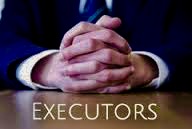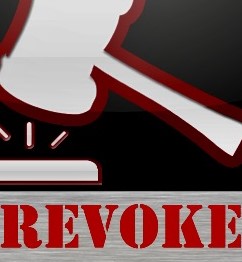Passing over an executor utilizes essentially the same legal criteria as removing an executor except it occurs before the named executor starts to act in the representative capacity.
Re Thommasson Estate 2011 BCSC 481 removed a named executor who was not a beneficiary but his siblings wished to review a questionable land transaction made to him by the deceased prior to death .
The criteria for the passing over of an executor is essentially the same as removing an executor- the court’s are reluctant to do so except for good reason having regard to the best interests of the beneficiaries.
19 Courts are hesitant to interfere with the testator’s right to nominate his or her executor. However, the court has both a statutory power under s. 31 of the Trustee Act, R.S.B.C. 1996, c. 464 and an inherent power to remove or pass over a trustee or executor: Mardesic v. Vukovich Estate (1988), 30 B.C.L.R. (2d) 170 (B.C. S.C.); Seaton Estate, Re, 2003 BCCA 555 (B.C. C.A.).
20 Section 31 of the Trustee Act provides:
If it is expedient to appoint a new trustee and it is found inexpedient, difficult or impracticable to do so without the assistance of the court, it is lawful for the court to make an order appointing a new trustee or trustees, whether there is an existing trustee or not at the time of making the order, and either in substitution for or in addition to any existing trustees.
21 In Mardesic, Finch J. (as he then was) in finding it necessary and expedient to remove the trustee because he was in a conflict of interest with the interests of all the beneficiaries of the estate, noted that s. 31 conferred a very broad power on the court.
22 The test for removal of an executrix or trustee is set out in Conroy v. Stokes, [1952] 4 D.L.R. 124 (B.C. C.A.), where the Court confirmed at 126-127 that the main test for removal of a trustee is the welfare of the beneficiaries:
In Letterstedt v. Broers (1884), 9 App. Cas. 371, their Lordships of the Judicial Committee held that the main principle upon which the jurisdiction of Courts of Equity has been exercised to remove old trustees and substitute new ones in cases requiring such a remedy, is the welfare of the beneficiaries of the trust estate.
23 In Stadelmier v. Hoffman (1986), 57 O.R. (2d) 495 (Ont. Surr. Ct.), (sub nom. Stadelmier v. Hoffman), the Court found the executor should be passed over because there was a conflict as a result of the fact the executor could not attack the gift and transfer of properties to him while at the same time maintaining in his personal capacity that the transfers were proper. The Court summarized the findings at 500:
In considering the fitness of the respondent to act as an executor I have considered also the duties of an executor in a general way. One duty of an executor is to bring in the estate for distribution among the beneficiaries. If it is perceived, on good grounds, that that important duty is compromised by a personal conflict of interest because the executor will be asked to sue himself to recover what may be a large part of the estate property, he must be passed over. That consideration is particularly important when the action against the executor is for a very significant amount in respect to the size of the estate.
24 In this case, Alex asserts he should not be removed because it would be pre-judging the case. He says that Brian is seeking to overturn the testators’ right to nominate an executor. Alex submits that the possibility of a future lawsuit is not sufficient to overturn a testator’s right to nominate an executor. He relies on the following cases for the proposition that this is not an appropriate case in which to pass over him as an executor: Hautakoski Estate, Re, 2009 BCSC 868 (B.C. Master); De Cotiis v. De Cotiis, 2008 BCSC 1206 (B.C. S.C. [In Chambers]); Le Roux v. Shannon, 2009 BCSC 331 (B.C. S.C. [In Chambers]); and Fawcett Estate v. Steiner, 1998 CarswellBC 625 (B.C. S.C. [In Chambers]).
25 Brian provided the following authorities in which the courts found a conflict that warranted either passing over or removal of an executor or trustee because of either a potential or actual conflict: Stadelmier v. Hoffman; Mardesic; Montgomery v. Osborne Estate1993 CarswellOnt 3482 (Ont. Gen. Div.); Maki Estate, Re, 2007 BCSC 1034 (B.C. Master); and Stern v. Stern, 2010 MBQB 68 (Man. Q.B.).
26 It is clear from reviewing the case law that each case turns on its own facts.
27 In this case, Alex is not a beneficiary under either of his parents’ wills, and his only interest in the estates is as an executor. The other named executor wants to make enquiries into the transfer of the Property to Alex in order to determine what, if any, interest the estates have in the Property, and what, if any, obligations Alex and his wife have to the estates as a result of the transfer.
28 The application is not to remove Alex as an executor but simply to pass over him so that an enquiry can be undertaken of the transfer of the Property to him and his wife by the deceased in 2006, and a determination can be made if any further actions need be taken in regards to the Property.
29 In the circumstances of this case, it is my opinion that there is a perceived conflict of interest between Alex in his role as an executor and his interest in his personal capacity. If an action is instituted by the executors as a result of the transfer of the Property, it would be against Alex. In my opinion, Alex, in his capacity as executor, cannot attack the transfer of the Property to himself while at the same time maintaining, in his personal capacity, that the transfer of the Property was proper. By making such a finding I am not prejudging the case. I am simply of the view that, in the circumstances of this case, if an action is commenced as a result of the enquiries into the transfer, Alex cannot conscientiously act as a plaintiff in his capacity as an executor in a case where he will be the defendant.
30 As a result I conclude that the passing over of Alex is necessary and expedient. His right to apply to be added as a co-executor under the grant of probate after the enquiry has been completed is reserved. There will be a grant of probate naming Brian as the personal representative of the estate of Herbert Thomasson and the estate of Agnes Annie Thomasson.










